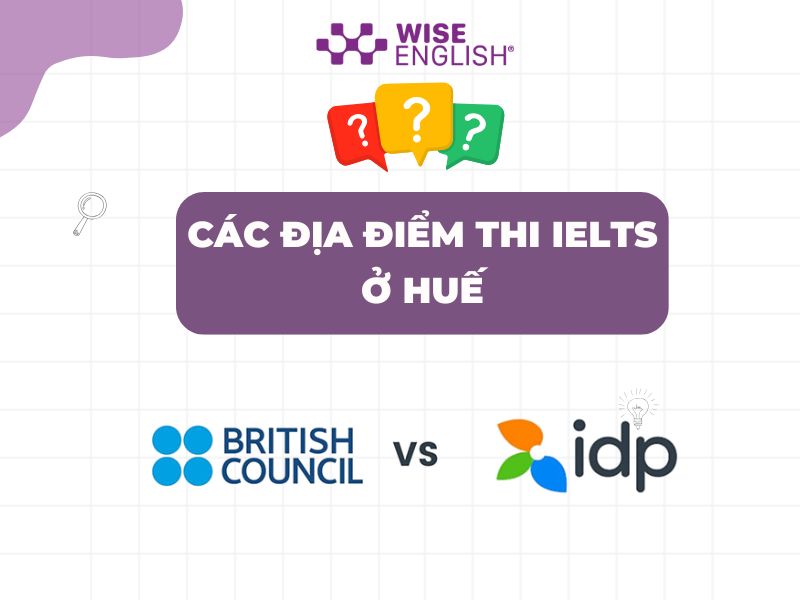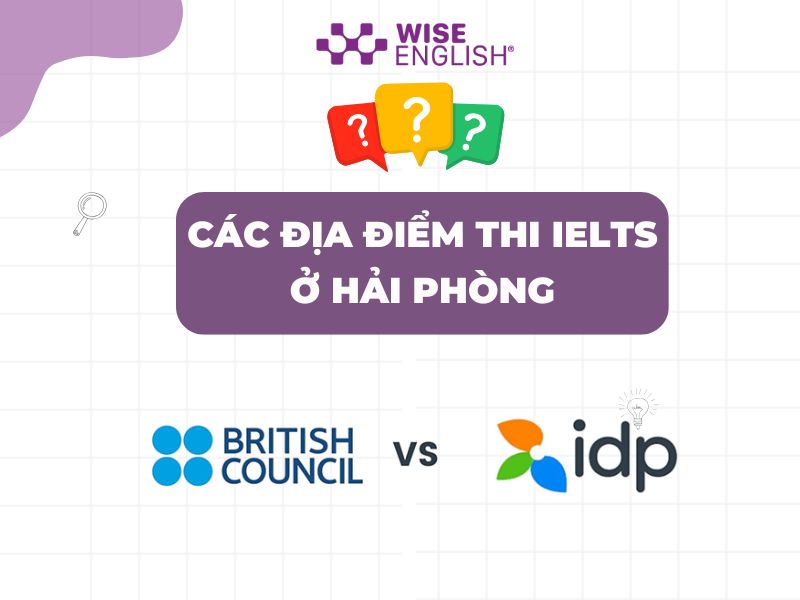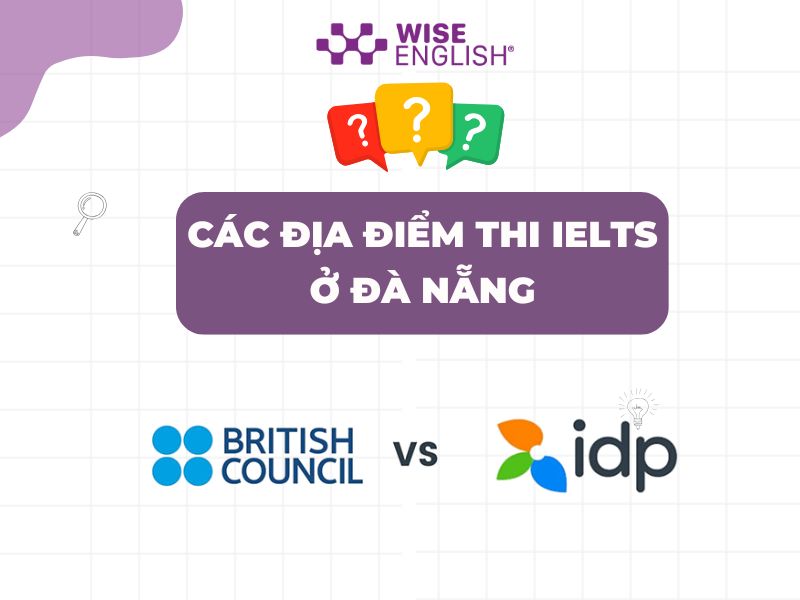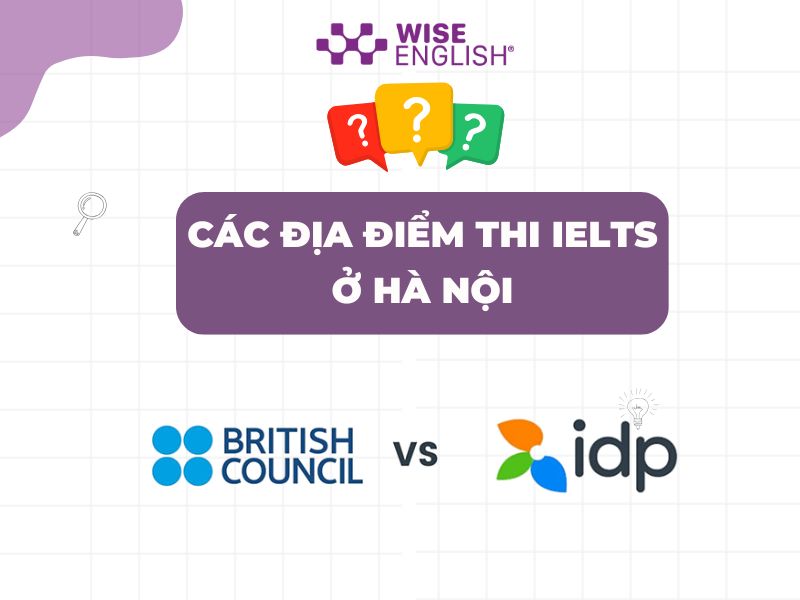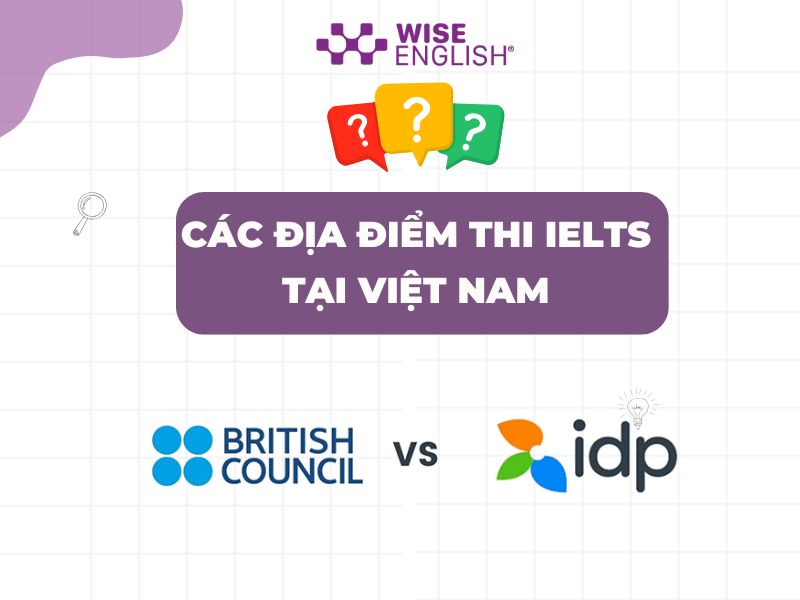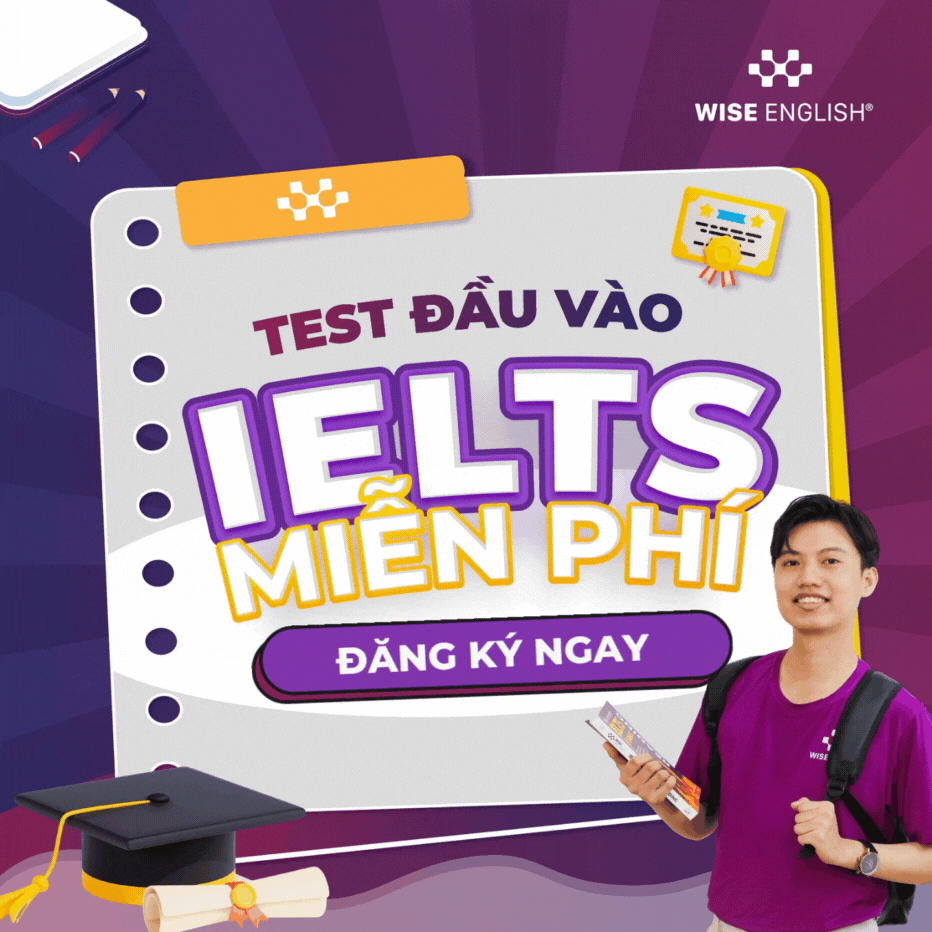Chủ đề “IELTS Writing topic Art” tưởng chừng dễ nhưng lại là “cơn ác mộng” của không ít bạn trẻ. Không chỉ đòi hỏi vốn từ vựng siêu chuyên sâu, mà còn phải kết hợp kiến thức xã hội để lập luận sao cho “mượt mà” và logic. Đừng vội nản nhé! Với bài viết này, WISE ENGLISH sẽ đồng hành cùng bạn, chia sẻ bộ từ vựng xịn sò, các collocations trendy và loạt ý tưởng “đắt giá” để chinh phục chủ đề Art một cách dễ dàng. Cùng học để bứt phá band điểm nào!
📌 Có thể bạn sẽ muốn biết thêm Bộ 30 chủ đề IELTS Writing phổ biến nhất
![[IDEA] IELTS Writing topic Art Task 2: ý tưởng và bài mẫu thú vị 1 IELTS Writing topic Art task 2](https://wiseenglish.edu.vn/wp-content/uploads/2024/11/ielts-writing-task-2-topic-art.jpg)
1. Một số đề bài mẫu trong IELTS Writing Topic Art Task 2
Dưới đây là một số đề bài mẫu trong IELTS Writing topic Art Task 2 bạn có thể tham khảo và bài viết mẫu bạn có thể áp dụng trong bài thi:
| The government’s investment in arts, music and theatre is a waste of money. Governments should invest these funds in public services instead.
To what extent do you agree with this statement? |
It is often argued that the government should finance public services instead of spending its budget on arts, music and theatre. Although I agree that government’s investments in public services play a very important role, I think that proper funding of arts sector is also crucial for the society.
On the one hand, the government should definitely allocate a large part of its budget on public services. This economic sector determines the overall quality of life, ensuring that some basic services, like schools, hospitals and roads, are available to all citizens irrespective of their income or social status. Public services satisfy the primary needs of the society and thus need a proper funding, while artists and musicians are not curing diseases or building houses, so their role is secondary.
For example, any country can live without music concerts, but absence of medicine will create significant problems. That’s why the government should adequately finance public services in the first place.
On the other hand, arts, music and theatre are not a waste of money, since they are an integral part of the society’s cultural and intellectual development and amusement. Firstly, art and music draw people’s attention to diverse phenomena and represent the inward significance of things. Quite often a single drawing, piece or song can exhort myriads of people to reconsider their attitude towards some situation. This way, art serves as a major source of nation’s personal and intellectual development. Moreover, visiting museums, watching movies and listening to music are common ways of relaxation and entertainment. Thus, art sector is also important for the society and should not be neglected.
To conclude, though I agree that the government should allocate a large part of its budget on such urgent needs of the society like public services, I think that arts, music and theatre should also be financed since they play an important role in people’s development and entertainment.
📌 WISE đã tổng hợp các dạng bài trong IELTS Writing task 1 bạn có thể đọc thêm:
- IELTS Writing Task 1: Cách mô tả biểu đồ đường – Line Graph
- IELTS Writing task 1 – Cách mô tả biểu đồ tĩnh – Static Chart
- IELTS Writing task 1 – Cách mô tả biểu đồ động – Dynamic Chart
- Cách mô tả biểu đồ cột IELTS Writing Task 1 – Bar Chart
- Cách mô tả biểu đồ tròn IELTS Writing Task 1 – Pie Chart
- IELTS Writing Task 1: Cách làm dạng bài Table IELTS – Bảng số liệu
- IELTS Writing task 1: Mixed Charts – Cách mô tả biểu đồ kết hợp
- Cách viết dạng bài IELTS Writing Process Task 1
- Cách viết dạng bài IELTS Writing Maps trong Task 1
| In some schools and universities, girls tend to choose arts subjects (e.g. literature), and boys tend to choose science subjects (e.g. physics). Why do you think this is so? Should this tendency be changed?
Give reasons for your answer and include any relevant examples from your own knowledge or experience. |
In many educational institutions, there is a noticeable trend where girls predominantly choose arts subjects, such as literature, while boys lean towards science subjects, such as physics. This gender disparity in subject choice raises questions about its underlying causes and whether it should be addressed. This essay will explore the reasons behind this phenomenon and argue that efforts should be made to encourage a more balanced distribution of subject choices among genders.
Firstly, societal expectations and stereotypes play a significant role in shaping the interests and preferences of students. From a young age, girls are often encouraged to pursue activities and subjects associated with creativity and empathy, while boys are steered towards analytical and technical fields. For example, parents might buy dolls and art supplies for their daughters and construction sets and science kits for their sons. These early influences can solidify gender-specific interests that persist into later educational choices. Consequently, girls may feel more inclined to study arts subjects, while boys might gravitate towards sciences.
Secondly, the lack of female role models in science and male role models in the arts can perpetuate this trend. When students do not see people of their gender excelling in certain fields, they may feel less confident in their ability to succeed in those areas. For instance, the underrepresentation of women in STEM (Science, Technology, Engineering, and Mathematics) careers can discourage girls from pursuing science subjects, while the scarcity of men in the arts can have a similar effect on boys. By highlighting and celebrating role models of both genders across all disciplines, educational institutions can help to break down these barriers and inspire students to explore a wider range of subjects.
In conclusion, I absolutely believe this tendency should be changed to foster a more inclusive and balanced educational environment. Schools and universities should play a crucial role by challenging stereotypes, providing diverse role models, and encouraging all students to pursue their interests regardless of gender.
| Museums and art galleries should concentrate on local works rather than showing the cultures or artworks from other countries.
To what extent do you agree or disagree? |
Museums and art galleries play a crucial role in preserving and showcasing cultural heritage. While some argue that these institutions should focus primarily on local works, others believe that exhibiting international cultures and artworks is equally important. This essay will discuss both perspectives, ultimately contending that a balanced approach is necessary for a comprehensive cultural experience.
Firstly, concentrating on local works in museums and art galleries can significantly benefit the community. Local art reflects the unique history, traditions, and values of a region, fostering a sense of pride and identity among residents. For instance, the National Gallery of Australia emphasises indigenous art, providing a platform for Aboriginal artists to share their stories and preserving their rich cultural heritage. By prioritising local works, museums can support local artists and contribute to the cultural and economic vitality of the community.
However, exclusively focusing on local works can be limiting. Showcasing international cultures and artworks offers educational opportunities and broadens visitors’ horizons. Exposure to diverse artistic expressions fosters cultural understanding and appreciation, which is increasingly important in our globalised world. For example, the Louvre in Paris, with its extensive collection of art from different civilizations, attracts millions of visitors annually and provides insights into various cultures. Such diversity enriches the visitor experience and promotes cross-cultural dialogue, which is essential for fostering global harmony.
In conclusion, I wholeheartedly believe a balanced approach, where both local and international pieces are showcased, is the most effective way for museums and art galleries to serve their educational and cultural missions. Moving forward, these institutions should strive to create diverse exhibitions that celebrate both local heritage and global diversity, enriching the cultural landscape for all visitors.
| Art should be better funded by the government but there must be more control over where the money goes. Discuss your viewpoint on this topic.
Give reasons for your answer and include any relevant examples from your own knowledge or experience. |
Government funding for the arts is a topic of considerable debate. While many agree that the arts should receive more financial support, there is also a call for increased oversight to ensure that funds are used effectively. This essay will discuss the importance of government funding for the arts and the need for stringent controls over the allocation of these funds.
Firstly, better funding for the arts is essential for fostering creativity and cultural enrichment. Art in its various forms—be it visual arts, music, theatre, or literature—plays a crucial role in society by reflecting cultural values, sparking social dialogue, and providing a medium for personal expression. For instance, public funding can enable free or low-cost access to museums, theatres, and galleries, making the arts accessible to a wider audience. Additionally, financial support can help emerging artists develop their careers and contribute new, innovative works to the cultural landscape. Thus, increased government funding can significantly enhance the vibrancy and diversity of the arts sector.
However, with increased funding comes the responsibility of ensuring that the money is allocated wisely. There have been instances where funds were misused or directed towards projects that did not yield substantial public benefit. For example, a high-profile art installation that fails to engage or resonate with the community can be seen as a waste of resources. To prevent such issues, there must be rigorous oversight and transparent processes for funding allocation. This could involve setting clear criteria for grants, regular audits, and involving a diverse panel of experts and community representatives in decision-making processes. Such measures would ensure that funds are directed towards projects that have the greatest potential for public impact and artistic merit.
In conclusion, while I strongly support better funding for the arts by the government, it is imperative to implement strict controls over where the money goes. Moving forward, governments should adopt more structured and inclusive approaches to funding the arts, thereby enriching cultural life and ensuring that resources are used effectively and equitably.
2. Các từ vựng hay IELTS Writing Task 2 topic Art
WISE đã tổng hợp một số từ vựng hữu ích để bạn có thể áp dụng vào bài viết về IELTS Writing topic Art, cùng tìm hiểu qua nhé.
2.1. Từ vựng thường dùng cho chủ đề IELTS writing Art
|
Từ vựng
|
Loại từ
|
IPA
|
Ý nghĩa
|
Ví dụ
|
|
Aesthetic
|
Adjective
|
/iːsˈθetɪk/
|
Thuộc về thẩm mỹ
|
The building has great aesthetic value.
|
|
Artistic expression
|
Noun phrase
|
/ɑːˈtɪstɪk ɪkˈspreʃən/
|
Sự biểu đạt nghệ thuật
|
Artistic expression is a vital part of cultural identity.
|
|
Abstract art
|
Noun phrase
|
/ˈæbstrækt ɑːt/
|
Nghệ thuật trừu tượng
|
Abstract art allows viewers to interpret the work in their own way.
|
|
Installation art
|
Noun phrase
|
/ˌɪnstəˈleɪʃən ɑːt/
|
Nghệ thuật sắp đặt
|
Installation art has gained popularity in modern exhibitions.
|
|
Masterpiece
|
Noun
|
/ˈmɑːstəpiːs/
|
Kiệt tác
|
Leonardo da Vinci’s “Mona Lisa” is considered a masterpiece.
|
|
Medium
|
Noun
|
/ˈmiːdiəm/
|
Chất liệu nghệ thuật
|
Artists often experiment with different mediums, such as oil and acrylic.
|
|
Cultural heritage
|
Noun phrase
|
/ˈkʌltʃərəl ˈherɪtɪdʒ/
|
Di sản văn hóa
|
Preserving cultural heritage is important for future generations.
|
|
Realism
|
Noun
|
/ˈrɪəˌlɪzəm/
|
Chủ nghĩa hiện thực
|
Realism focuses on depicting everyday life accurately.
|
|
Impressionism
|
Noun
|
/ɪmˈpreʃənɪzəm/
|
Trường phái ấn tượng
|
Impressionism emphasizes light and color over detailed representation.
|
|
Sculpture
|
Noun
|
/ˈskʌlptʃər/
|
Tác phẩm điêu khắc
|
The sculpture of David is one of Michelangelo’s most famous works.
|
|
Contemporary art
|
Noun phrase
|
/kənˈtɛmpərəri ɑːt/
|
Nghệ thuật đương đại
|
Contemporary art reflects current societal issues.
|
|
Creative process
|
Noun phrase
|
/kriˈeɪtɪv ˈprəʊsɛs/
|
Quá trình sáng tạo
|
The creative process often involves brainstorming and experimentation.
|
|
Visual storytelling
|
Noun phrase
|
/ˈvɪʒuəl ˈstɔːriˌtelɪŋ/
|
Kể chuyện bằng hình ảnh
|
Visual storytelling is a powerful way to convey emotions.
|
|
Art installation
|
Noun phrase
|
/ɑːt ˌɪnstəˈleɪʃən/
|
Tác phẩm nghệ thuật sắp đặt
|
The art installation was displayed in the museum’s main hall.
|
|
Traditional crafts
|
Noun phrase
|
/trəˈdɪʃənəl kræfts/
|
Nghề thủ công truyền thống
|
Traditional crafts often carry cultural significance.
|
|
Patron of the arts
|
Noun phrase
|
/ˈpeɪtrən əv ði ɑːts/
|
Người bảo trợ nghệ thuật
|
Many famous artists were supported by patrons of the arts.
|
|
Art critic
|
Noun
|
/ɑːt ˈkrɪtɪk/
|
Nhà phê bình nghệ thuật
|
The art critic praised the bold use of color in the painting.
|
|
Art movement
|
Noun phrase
|
/ɑːt ˈmuːvmənt/
|
Trường phái nghệ thuật
|
Surrealism is an art movement that explores the unconscious mind.
|
|
Digital art
|
Noun
|
/ˈdɪdʒɪtəl ɑːt/
|
Nghệ thuật số
|
Digital art has opened up new possibilities for creativity.
|
|
Cultural identity
|
Noun phrase
|
/ˈkʌltʃərəl aɪˈdɛntɪti/
|
Bản sắc văn hóa
|
Art often serves as a reflection of cultural identity.
|
Một số lưu ý khi áp dụng từ vựng này vào bài viết IELTS Writing topic Art mà bạn nên biết:
- Các từ và cụm từ trên phù hợp để sử dụng trong bài luận IELTS Writing topic Art như:
- Discuss both views: Should government funding for art be prioritized?
- Argumentative essays: Do you agree that traditional art forms are becoming irrelevant?
- Kết hợp sử dụng từ vựng cùng cấu trúc phức tạp để ghi điểm trong tiêu chí Lexical Resource.
2.2. Từ vựng theo thời đại mới cho IELTS writing topic Art
Dưới đây là danh sách từ vựng phong phú liên quan đến chủ đề IELTS Writing topic Art trong thời đại hiện tại, áp dụng công nghệ AI và bối cảnh của thời đại số.
|
Từ vựng
|
Loại từ
|
IPA
|
Ý nghĩa
|
Ví dụ
|
|
Digital art
|
Noun
|
/ˈdɪdʒɪtəl ɑːt/
|
Nghệ thuật số
|
Digital art has transformed the way we perceive traditional painting.
|
|
Generative AI
|
Noun
|
/ˈdʒɛnərətɪv ˌeɪ.aɪ/
|
Trí tuệ nhân tạo sáng tạo
|
Generative AI allows artists to produce unique artworks effortlessly.
|
|
NFT (Non-Fungible Token)
|
Noun
|
/ɛn ɛf ˈtiː/
|
Token không thể thay thế (tài sản số độc nhất)
|
NFTs have revolutionized how digital art is bought and sold.
|
|
Augmented reality (AR)
|
Noun
|
/ɔːɡˈmɛntɪd rɪˈælɪti/
|
Công nghệ thực tế tăng cường
|
AR art installations offer interactive experiences for audiences.
|
|
Virtual reality (VR)
|
Noun
|
/ˈvɜːtjʊəl rɪˈælɪti/
|
Công nghệ thực tế ảo
|
Virtual reality art galleries are becoming increasingly popular.
|
|
Algorithmic art
|
Noun
|
/ˌælɡəˈrɪðmɪk ɑːt/
|
Nghệ thuật thuật toán
|
Algorithmic art uses complex calculations to create stunning visuals.
|
|
Interactive installations
|
Noun phrase
|
/ˌɪntərˈæktɪv ˌɪnstəˈleɪʃənz/
|
Các tác phẩm nghệ thuật tương tác
|
Interactive installations engage viewers in the creative process.
|
|
AI-generated imagery
|
Noun phrase
|
/ˌeɪ.aɪ ˈdʒɛnərətɪd ˈɪmɪdʒri/
|
Hình ảnh được tạo ra bởi trí tuệ nhân tạo
|
AI-generated imagery challenges traditional notions of artistic skill.
|
|
Cyberart
|
Noun
|
/ˈsaɪbər ˌɑːt/
|
Nghệ thuật không gian mạng
|
Cyberart explores the fusion of technology and creativity.
|
|
Creative coding
|
Noun phrase
|
/krɪˈeɪtɪv ˈkəʊdɪŋ/
|
Lập trình sáng tạo
|
Creative coding enables artists to craft digital masterpieces.
|
|
Blockchain art
|
Noun phrase
|
/ˈblɒk.tʃeɪn ɑːt/
|
Nghệ thuật dựa trên công nghệ blockchain
|
Blockchain art provides a secure platform for digital art ownership.
|
|
Digital canvas
|
Noun phrase
|
/ˈdɪdʒɪtəl ˈkænvəs/
|
Bảng vẽ kỹ thuật số
|
Artists now use digital canvases instead of traditional ones.
|
|
Immersive experience
|
Noun phrase
|
/ɪˈmɜːsɪv ɪkˈspɪərɪəns/
|
Trải nghiệm chìm đắm
|
Immersive experiences redefine how people interact with art.
|
|
3D modeling
|
Noun
|
/ˌθriːˈdiː ˈmɒdəlɪŋ/
|
Mô hình hóa 3D
|
3D modeling is commonly used in digital sculpture creation.
|
|
Digital restoration
|
Noun phrase
|
/ˈdɪdʒɪtəl ˌrɛstəˈreɪʃən/
|
Phục chế kỹ thuật số
|
Digital restoration has preserved many classical artworks for future generations.
|
|
AI art curator
|
Noun phrase
|
/ˌeɪ.aɪ ˈkjuːreɪtər/
|
Người giám tuyển nghệ thuật sử dụng trí tuệ nhân tạo
|
AI art curators assist in organizing large-scale digital exhibitions.
|
|
Holographic projection
|
Noun phrase
|
/ˌhɒləˈɡræfɪk prəˈdʒekʃən/
|
Công nghệ chiếu hình ảnh 3D
|
Holographic projection creates a three-dimensional illusion of the artwork.
|
|
Metaverse exhibitions
|
Noun phrase
|
/ˈmɛtəvɜːs ˌeksɪˈbɪʃənz/
|
Triển lãm trong không gian ảo (metaverse)
|
Metaverse exhibitions attract global audiences without physical barriers.
|
|
AI-assisted design
|
Noun phrase
|
/ˌeɪ.aɪ əˈsɪstɪd dɪˈzaɪn/
|
Thiết kế được hỗ trợ bởi trí tuệ nhân tạo
|
AI-assisted design is streamlining the creative process in modern art.
|
WISE cần bạn lưu ý các vấn đề sau nếu áp dụng các từ vựng AI này:
- Những từ vựng này phù hợp với các bài viết dạng thảo luận (discuss both views), tranh luận (argumentative), hoặc phân tích vấn đề (problem-solution) trong IELTS Writing.
- Sử dụng các cụm từ và ví dụ phù hợp với bối cảnh công nghệ số sẽ giúp bài viết thêm nổi bật và bắt kịp xu thế hiện đại.
3. Ý tưởng triển khai cho IELTS Writing Task 2 Topic Art
Một số ý tưởng bạn có thể triển khai cho bài viết IELTS writing topic Art tốt hơn.
- Art and education: Tích hợp nghệ thuật vào giảng dạy để phát triển toàn diện.
- Art and economy: Nghệ thuật là công cụ thúc đẩy du lịch và quảng bá văn hóa.
- Art and technology: Công nghệ là con dao hai lưỡi, vừa làm phong phú, vừa có thể làm mất đi giá trị truyền thống.
- Art preservation: Chính phủ và xã hội cần hợp tác để bảo tồn và phát triển nghệ thuật trong thời đại toàn cầu hóa.
📌 WISE ENGLISH đã tổng hợp một số bài viết về IELTS Writing Task 2 mà bạn có thể tham khảo thêm
4. Một số sai lầm thường gặp khi bắt đầu làm IELTS Writing Task 2
Khi viết bài, tất nhiên chúng ta sẽ không tránh khỏi những sai lầm thường gặp. WISE đã tổng hợp lại một số sai lầm mà bạn có thể mắc phải trong quá trình lên ý tưởng để viết bài, khi người đọc hiểu chưa kỹ đề bài và lựa chọn viết các ý tưởng liên quan đến đề thi.
4.1. Không hiểu đúng đề bài
Người viết không phân tích rõ câu hỏi, dẫn đến bài viết không đúng trọng tâm hoặc trả lời sai yêu cầu. Ví dụ: Đề yêu cầu “Discuss both views and give your opinion”, nhưng người viết chỉ đưa ra quan điểm cá nhân mà không bàn luận cả hai ý kiến.
Giải pháp:
- Phân tích kỹ đề bài, chú ý các từ khóa như “advantages and disadvantages”, “to what extent do you agree”, hay “causes and solutions”.
- Gạch chân yêu cầu chính và loại bài viết (discussion, opinion, problem-solution, v.v.).
4.2. Lạm dụng từ vựng hoặc cấu trúc phức tạp
Sử dụng từ vựng hoặc cấu trúc không phù hợp, gây khó hiểu hoặc sai ngữ pháp. Ví dụ: “The administration should be a benefactor of the educational domain” (không tự nhiên).
Giải pháp:
- Ưu tiên tính chính xác và tự nhiên hơn là phức tạp.
- Sử dụng các từ vựng liên quan đến chủ đề và phù hợp ngữ cảnh. Ví dụ, với chủ đề Education, dùng “government funding” hoặc “allocate resources”.
4.3. Thiếu lập luận hoặc ví dụ cụ thể
Đưa ra ý kiến nhưng không có dẫn chứng hoặc ví dụ rõ ràng. Ví dụ: “Technology is good for education” mà không giải thích lý do hoặc minh họa.
Giải pháp:
- Sử dụng PEEL method:
- Point: Đưa ra ý chính.
- Explanation: Giải thích tại sao ý đó đúng.
- Example: Cung cấp ví dụ thực tế.
- Link: Liên kết lại với câu hỏi.
📌 Bạn có thể tham khảo thêm Hướng dẫn cách làm IELTS Writing Task 2
4.4. Viết không có cấu trúc rõ ràng
Bài viết thiếu mạch lạc, không chia đoạn hợp lý, hoặc không có câu dẫn nhập kết nối các ý.
Giải pháp:
- Sử dụng cấu trúc chuẩn:
- Introduction: Paraphrase đề bài, nêu ý kiến (nếu cần).
- Body Paragraphs: Mỗi đoạn một ý chính, hỗ trợ bằng lập luận/ví dụ.
- Conclusion: Tóm tắt ý kiến chính, không thêm thông tin mới.
4.5. Lặp từ vựng hoặc ý tưởng
Người viết lặp lại cùng một từ hoặc cụm từ quá nhiều lần. Ví dụ: “Technology is beneficial. Technology helps people. Technology improves life.”
Giải pháp:
- Sử dụng từ đồng nghĩa hoặc cách diễn đạt lại (paraphrase).
- Ví dụ: Technology → digital advancements, innovations.
- Tránh lặp ý, luôn cố gắng mở rộng lập luận.
4.6. Không kiểm soát thời gian
Dành quá nhiều thời gian cho một phần bài viết, khiến phần khác sơ sài.
Giải pháp:
- Phân bổ thời gian hợp lý:
- 5 phút: Lập dàn ý.
- 30 phút: Viết bài.
- 5 phút: Kiểm tra lỗi.
4.7. Viết quá ít hoặc quá nhiều từ
Viết dưới 250 từ (bị trừ điểm) hoặc viết quá nhiều dẫn đến thiếu thời gian và sai ngữ pháp.
Giải pháp:
- Nhắm mục tiêu 260–280 từ, không dài dòng, tập trung vào chất lượng hơn số lượng.
4.8. Sai chính tả, ngữ pháp và dấu câu
Lỗi cơ bản như thiếu “s” số ít, số nhiều, hoặc dấu câu không đúng.
Giải pháp:
- Kiểm tra kỹ bài viết sau khi hoàn thành.
- Tập trung luyện các lỗi thường gặp:
- Subject-verb agreement: “People enjoys art” → “People enjoy art”.
- Articles: “The art is important” → “Art is important”.
4.9. Đưa ra ý kiến cực đoan hoặc thiếu cân bằng
Ý kiến quá phiến diện mà không xem xét góc nhìn khác. Ví dụ: “Art is useless in modern society.”
Giải pháp:
- Duy trì sự cân bằng: Thừa nhận quan điểm đối lập trước khi bảo vệ quan điểm cá nhân.
- Ví dụ: “While some argue that art lacks practicality, it undeniably fosters creativity and cultural identity.”
4.10. Không dành thời gian kiểm tra bài viết
Không kiểm tra lỗi sau khi viết, dẫn đến nhiều sai sót ngữ pháp và chính tả.
Giải pháp:
- Dành 3-5 phút cuối để đọc lại bài viết.
- Tập trung vào các lỗi phổ biến của bản thân (từ vựng, ngữ pháp, dấu câu).
5. Luyện thi IELTS cùng WISE ENGLISH
WISE ENGLISH áp dụng phương pháp học của WISE ENGLISH dựa trên Khoa Học Tư Duy Não Bộ (NLP) và Ngôn Ngữ (Linguistics) để giúp học viên tiếp cận tiếng Anh dễ dàng hơn, chủ động hơn trong môi trường học này.
![[IDEA] IELTS Writing topic Art Task 2: ý tưởng và bài mẫu thú vị 2 Luyện thi IELTS với WISE ENGLISH](https://wiseenglish.edu.vn/wp-content/uploads/2022/02/khoa-hoc-ielts-tai-wise-english.jpg)
Cùng khám phá những từ vựng giúp bạn ghi điểm trong phần thi IELTS writing topic Art nhé. Đây là những từ đã được liệt kê theo các khía cạnh khác nhau của chủ đề nhằm giúp bạn ghi nhớ một cách dễ dàng nhất.
📌 Bạn muốn tham khảo phương pháp luyện thi IELTS độc đáo và hiệu quả tại WISE English? Tham khảo ngay Trung tâm Luyện thi IELTS uy tín và hiệu quả
Để giúp bạn ôn luyện hiệu quả cho kỳ thi, WISE ENGLISH cung cấp nguồn tài liệu luyện thi hữu ích bao gồm các Hội thảo sự kiện IELTS, Khóa học luyện thi được gợi ý dựa trên nhu cầu và trình độ của mỗi cá nhân.
Đừng quên follow ngay Fanpage,Group cộng đồng nâng band thần tốc và kênh Youtube WISE ENGLISH để học thêm nhiều bí kíp giúp bạn NÂNG BAND THẦN TỐC và chinh phục các nấc thang của IELTS bằng Phương Pháp Học Vượt Trội và Lộ Trình Cá Nhân Hóa nhé.
📌 Các chủ đề liên quan mà bạn có thể quan tâm:
- Chi tiết cấu trúc đề thi IELTS 2024 và dạng câu hỏi mà bạn cần biết
- Top 6 website cung cấp đề thi thử IELTS Online miễn phí 2024
- Tổng hợp đề thi IELTS cập nhật mới nhất





![[IDEA] IELTS Writing topic Art Task 2: ý tưởng và bài mẫu thú vị 3 uu-dai-giam-45](https://wiseenglish.edu.vn/wp-content/uploads/2021/03/uu-dai-giam-45.png)
